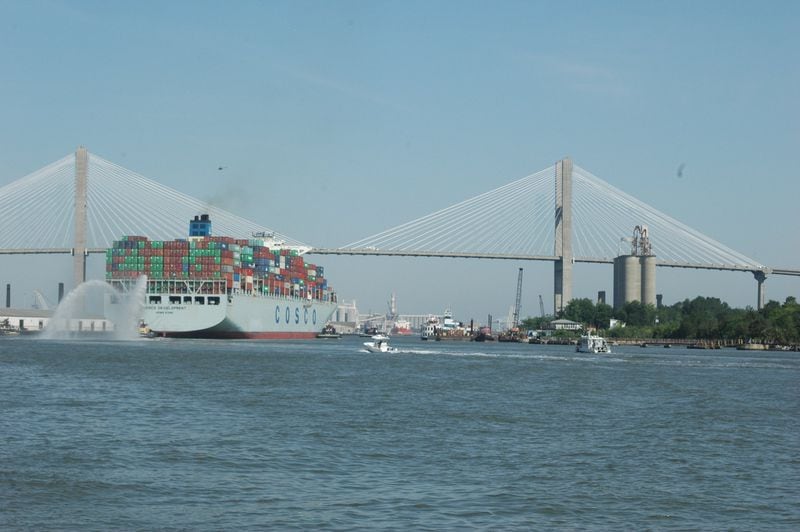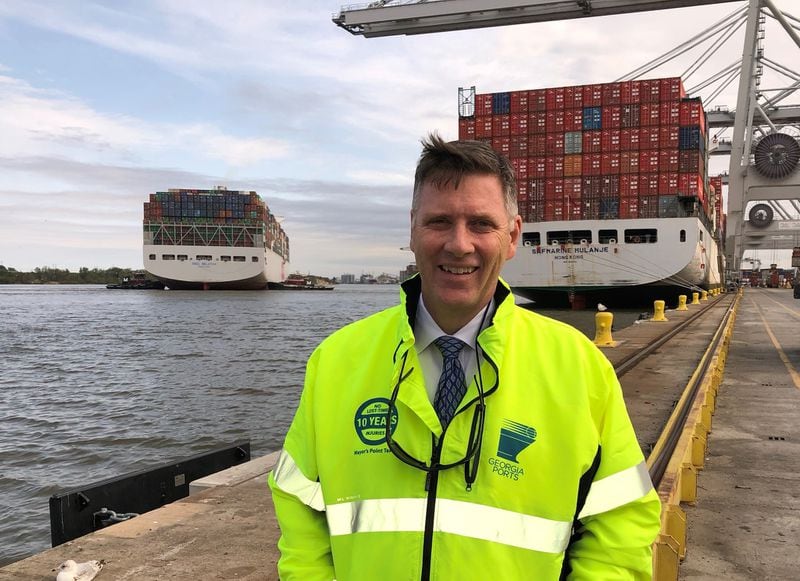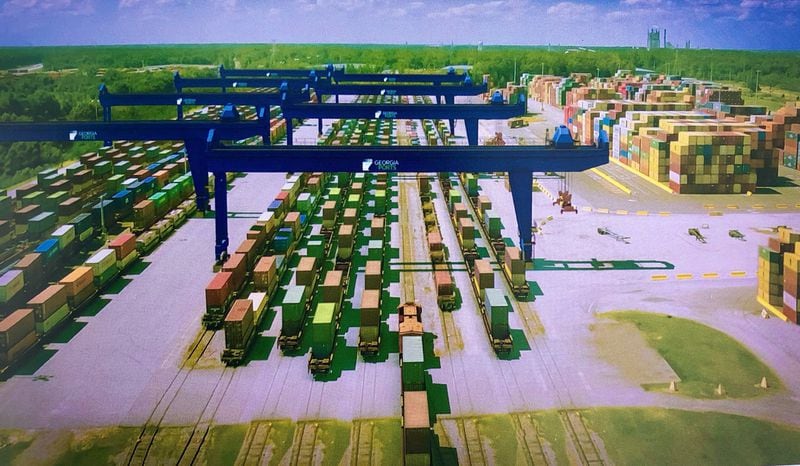The Georgia Ports Authority’s need to expand capacity at its Savannah terminal could require a replacement for the city’s Talmadge Memorial Bridge.
Georgia Ports Authority Executive Director Griff Lynch told a crowd at the agency’s State of Ports meeting Thursday that the authority and state Department of Transportation plan to discuss a possible replacement of the bridge to accommodate larger classes of cargo vessels.
The suspension bridge that connects Savannah to South Carolina has stood as a landmark on the city’s skyline since it opened in 1991. The bridge carries the name of the late former Georgia Gov. Eugene Talmadge, a segregationist elected to three terms as governor in the 1930s and 1940s.
The Talmadge name dominated Georgia politics for six decades. Talmadge’s son, Herman, who died in 2002, also served as governor.
Savannah is a majority African-American city, and the city's political leaders have sought a new name, though that effort stalled in this year's legislative session.
Credit: J. Scott Trubey/AJC
Credit: J. Scott Trubey/AJC
State. Rep. Ron Stephens, R-Savannah, who chairs the House Economic Development and Tourism Committee, said the bridge was never formally named by the state, and the Talmadge name simply carried over from an earlier bridge it replaced. Stephens backed a proposal to rename the bridge for Savannah native and Girl Scouts founder Juliette Gordon Low.
A new bridge, Stephens said, is necessary for continued growth of the port and offers an opportunity for a new name.
“We haven’t give up and we’ve got to do something of significant for arguably one of the most prominent Georgia women in our history,” he said.
Emails to state DOT spokeswomen were not immediately returned.
The Port of Savannah handled a record 4.2 million twenty-foot equivalent units (TEUs) in the past 12 months, an annual growth rate of more than 8 percent.
Lynch said in an interview the Savannah port can handle 5.5 million TEUs per year today. But it will need to grow capacity on its current footprint to 8 million TEUs by 2028, given current growth projections.
The ports authority has a 10-year, $2.5 billion plan to build new capacity to the Garden City Terminal to get there.
But the pinch point could be the bridge.
“Savannah is a gateway port,” Lynch said. “There will come a time when someone will want to bring these [bigger] ships in. We want to be ready, and [the bridge is] an impediment to growth.”
The Army Corps of Engineers is in the process of a nearly $1 billion deepening of the Savannah River to 47 feet to allow bigger ships to more freely. That project is expected to finish in late 2021.
The current bridge’s road deck isn’t high enough to handle some of the largest ships, Lynch said, and other states, including New York, have had to build new bridges so bigger ships can reach harbor.
It’s too early for project cost estimates, Lynch said. The bridge project would be led by the state DOT and the ports authority could play a role in its construction, though the authority does not have the capacity to pay for its construction.
Stephens said planning for a such a big project needs to start immediately, and he said he hopes Georgia and South Carolina leaders can share costs on the project. Long-range plans call for a joint Georgia-South Carolina port complex on the South Carolina side of the river, and a new bridge would benefit both states, Stephens said.
In addition to a new bridge, the ports outlined several needed improvements to the Garden City Terminal to get to 8 million TEUs on site.
These include new and expanded terminal gates, a reconfiguration of its road network and storage space that would require the relocation of the authority’s executive offices and new refrigerated storage units. The port also expects to grow from 30 to 42 ship-to-shore cranes.
A major rail expansion, known as the Mason Mega Rail Terminal, is expected to be completed by the end of 2020. It could eventually take some 200,000 big rig trucks off the state’s freeways — even as container traffic in and out of the port grows, ports officials have said.
Michael Toma, an economist at Georgia Southern University, said the ports expansion projects, and new inland rail ports across the state, are all about increasing efficiency. Together, they will make the Savannah terminal faster and more cost-competitive with other ports. For importers, exporters and shippers, time is money.
“The whole idea there is to increase the speed with which these containers can be handled and processed,” Toma said.
Georgia’s ports system accounts for more than $40 billion in estimated economic impact across the state, and directly or indirectly touches more than 439,000 jobs, a University of Georgia study has found.
Hartsfield-Jackson International Airport is vital to business growth and global trade for the state, but so is the Savannah port, said Roger Tutterow, a Kennesaw State University economist.
“It’s not just good for Savannah, it’s good for Georgia,” he said.
About the Author










